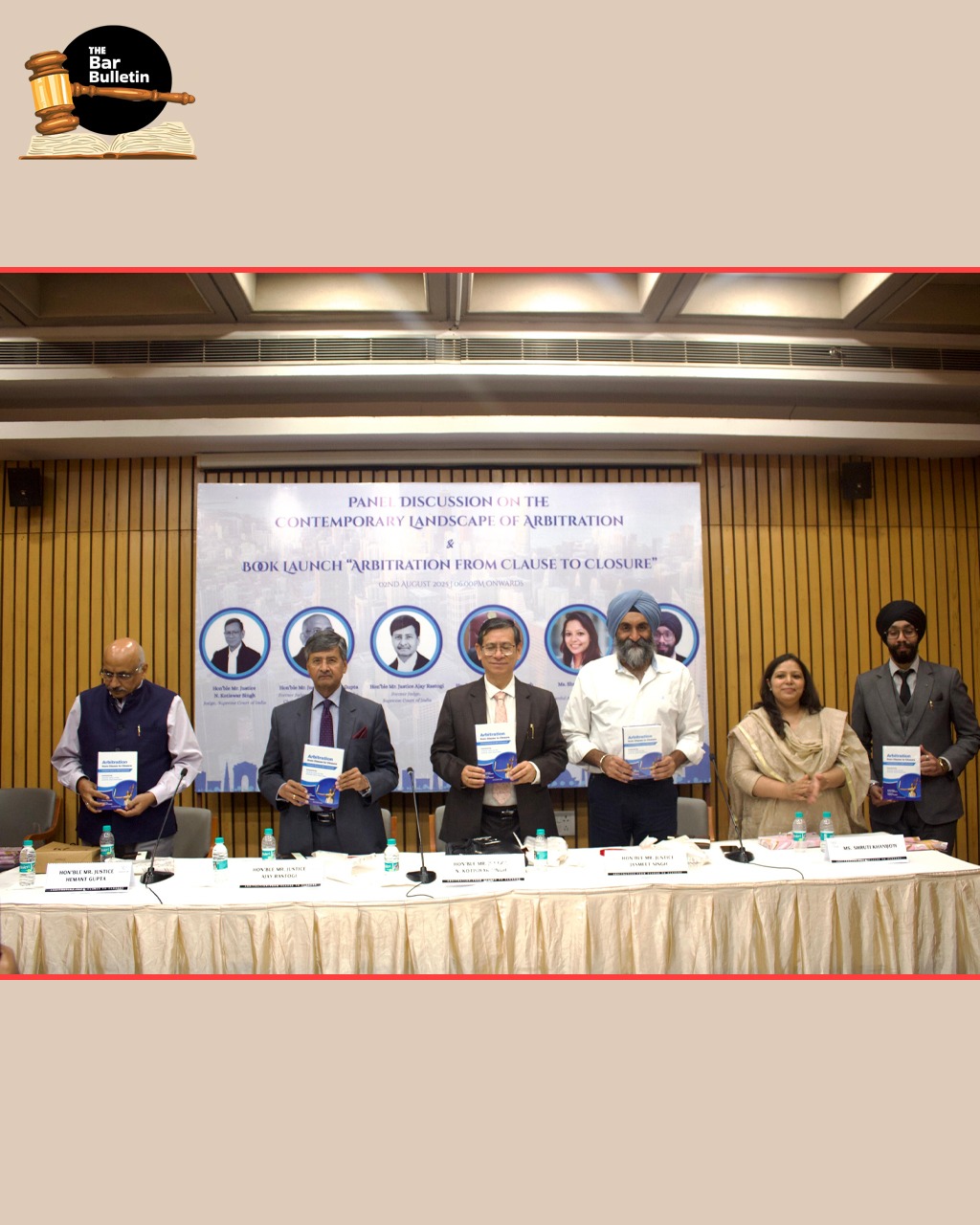A distinguished panel comprising senior judges, legal luminaries, and arbitration experts convened on August 2, 2025, for a thought-provoking discussion on the “Contemporary Landscape of Arbitration”, coinciding with the launch of “Arbitration: From Clause to Closure”, a new book authored by Mr. Param Bhamra, Arbitrator and Founding Partner at MediateGuru.
The event brought together perspectives from the Bench, Bar, and institutions, offering deep insights into the evolving role of arbitration in India’s legal ecosystem. The panel comprised:
- Hon’ble Mr. Justice N. Kotiswar Singh, Judge, Supreme Court of India
- Hon’ble Mr. Justice Hemant Gupta, Former Judge, Supreme Court of India & Chairperson, Indian International Arbitration Centre (IIAC)
- Hon’ble Mr. Justice Ajay Rastogi, Former Judge, Supreme Court of India
- Hon’ble Mr. Justice Jasmeet Singh, Judge, Delhi High Court
- Ms. Shruti Khanijow, Partner, Shardul Amarchand Mangaldas
- Mr. Param Bhamra, Arbitrator and Author
The event also marked the official release of Mr. Param Bhamra’s book, “Arbitration: From Clause to Closure”, a practical and comprehensive guide on navigating the arbitration process from drafting to enforcement.
Key Highlights from the Panel Discussion:
Justice N. Kotiswar Singh emphasized the need for flexibility in arbitration law, noting that real-world complexities often defy rigid timelines and frameworks. He remarked:
“We are not conducting scientific experiments—we are dealing with human affairs. The law must remain adaptive and responsive to regional perceptions of justice.”
He also underscored arbitration’s transformative potential to reduce judicial backlog, especially with the support of technological integration and youth engagement.
“Arbitration can evolve into a monumental movement and a rewarding avenue for young legal professionals.”
Justice Hemant Gupta highlighted structural challenges in India’s arbitration ecosystem, especially the court-driven appointment process, contrasting it with institutional practices abroad:
“Unlike global arbitral forums where institutions appoint arbitrators efficiently, we still rely on court appointments—often deprioritized due to heavier constitutional dockets.”
He also addressed upcoming reforms, referencing the Arbitration and Conciliation (Amendment) Bill, 2024, which proposes the establishment of an Appellate Arbitral Tribunal:
“This could reduce one level of judicial intervention by bypassing the Principal Civil Court, but Article 227 review by High Courts remains constitutionally protected.”
Justice Ajay Rastogi reflected on judicial practice and the blurred distinction between Sections 34 and 37 of the Arbitration Act:
“Despite multiple seminars and judgments, we still treat every Section 34 matter as an appeal. Even the Supreme Court does so under Article 136.”
Justice Jasmeet Singh shared the challenges courts face under Section 34, especially when dealing with technically sound but legally inadequate awards:
“Some arbitrators are domain experts, not legal minds. When something basic is missed, the court must weigh its duty to intervene with the principle of non-interference.”
Mr. Param Bhamra, in presenting his book, emphasized the need for practical clarity and user-friendly arbitration frameworks, particularly for young professionals entering the field. The book has been lauded for bridging doctrinal understanding with procedural insight.
Ms. Shruti Khanijow added valuable institutional and practitioner perspectives, reinforcing the need for both capacity-building and systemic simplification in commercial arbitration.
Watch the full discussion Here
The event concluded with an interactive audience Q&A and a call to further engage with arbitration as a strategic, efficient, and evolving mode of dispute resolution.

